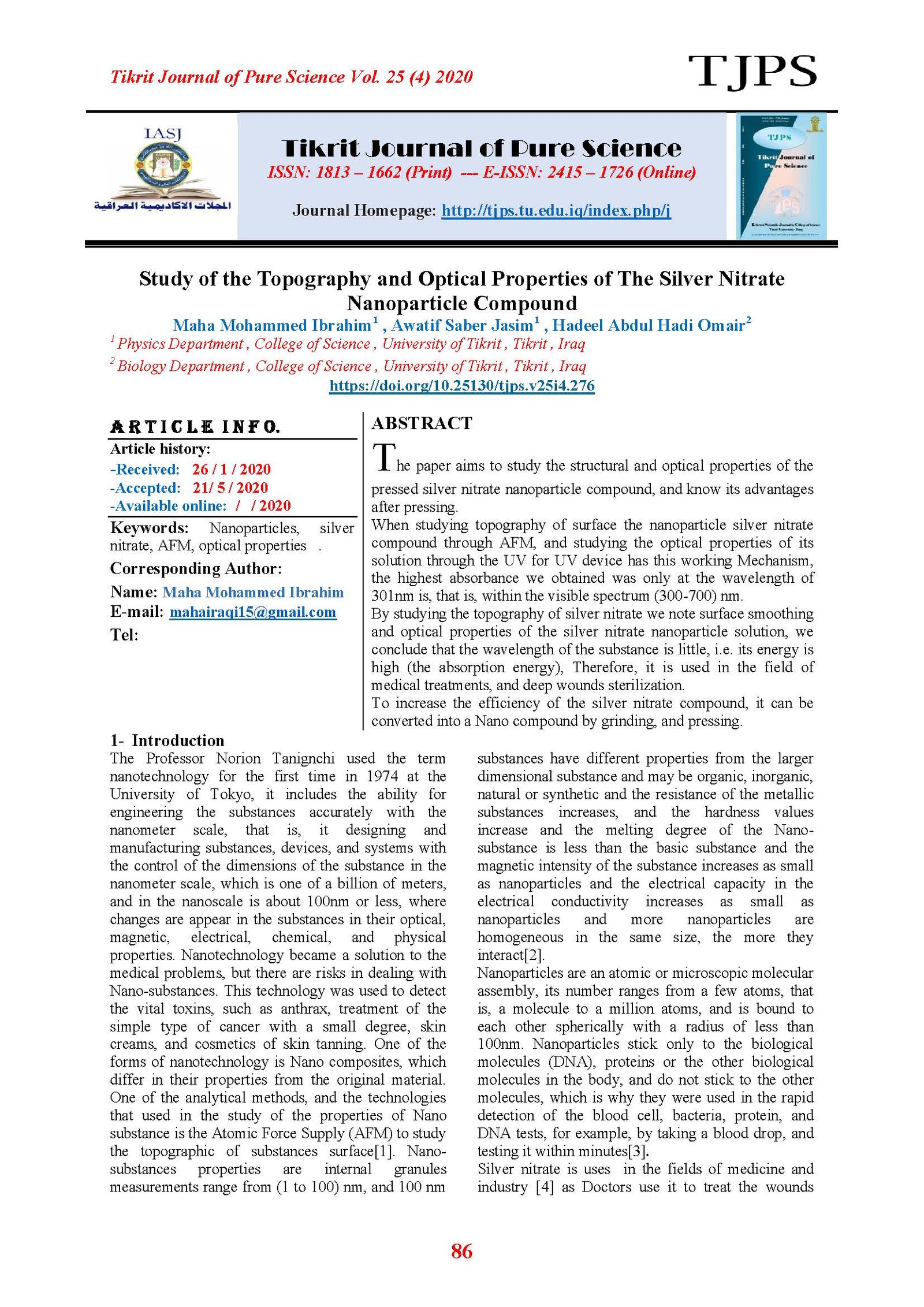Study of the Topography and Optical Properties of The Silver Nitrate Nanoparticle Compound
Main Article Content
Abstract
The paper aims to study the structural and optical properties of the pressed silver nitrate nanoparticle compound, and know its advantages after pressing.
When studying topography of surface the nanoparticle silver nitrate compound through AFM, and studying the optical properties of its solution through the UV for UV device has this working Mechanism, the highest absorbance we obtained was only at the wavelength of 301nm is, that is, within the visible spectrum (300-700) nm.
By studying the topography of silver nitrate we note surface smoothing and optical properties of the silver nitrate nanoparticle solution, we conclude that the wavelength of the substance is little, i.e. its energy is high (the absorption energy), Therefore, it is used in the field of medical treatments, and deep wounds sterilization.
To increase the efficiency of the silver nitrate compound, it can be converted into a Nano compound by grinding, and pressing.
Article Details

This work is licensed under a Creative Commons Attribution 4.0 International License.
Tikrit Journal of Pure Science is licensed under the Creative Commons Attribution 4.0 International License, which allows users to copy, create extracts, abstracts, and new works from the article, alter and revise the article, and make commercial use of the article (including reuse and/or resale of the article by commercial entities), provided the user gives appropriate credit (with a link to the formal publication through the relevant DOI), provides a link to the license, indicates if changes were made, and the licensor is not represented as endorsing the use made of the work. The authors hold the copyright for their published work on the Tikrit J. Pure Sci. website, while Tikrit J. Pure Sci. is responsible for appreciate citation of their work, which is released under CC-BY-4.0, enabling the unrestricted use, distribution, and reproduction of an article in any medium, provided that the original work is properly cited.
References
[1] Al-Ali, M.A.(2014). Nanotechnology: the world of very small things with unique properties. Al-Baath University Journal ,Syria ,36(11): 2-12.
[2] Kamal, H.M. (2015). Nanotechnology and its applications in the industry. M.Sc. Thesis, Sudan University of Science and Technology, Sudan,p: 20-26.
[3] Salem, M. S. and Ahmed A. (2018). The study of nanotechnology applications and how it works in the mobile laboratory L.O.C.D. M.Sc. Thesis, University of Qadisiyah , Iraq, P: 11-20.
[4] Lindgren, A. L. (2014). The effects of Silver nitrate and Silver nanoparticles on chlamydomonas reinhardtii: a proteomic approach. M.Sc. Thesis, University of Gothenburg, London,P: 7-9.
[5] Karimi, J., Susan M.(2017). Physiological Effects of Silver Nanoparticles and Silver Nitrate Toxicity in Triticum aestivum. Iranian journal of scince and technology ,Iran, 41(1): 111-120.
[6] Dakheel, R.H.A. (2018). The study of some physical properties of laser energy of copper and cadmium oxide nanoparticles and their anti-bacterial effect. Tikrit Journal of Pure Science,23(10): 72-75.
[7] Yassin, M. B.I. (2018). Improving the wear behavior of a silver-based hybrid composite. M.Sc. Thesis, Tikrit University, College of Education for Pure Sciences, Iraq,P:78-80.
